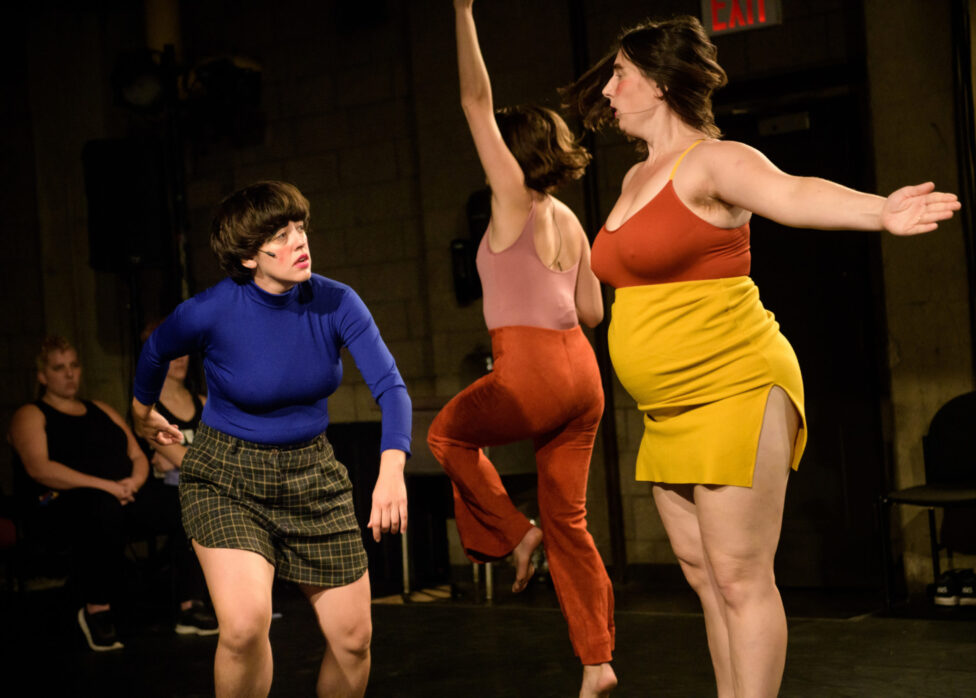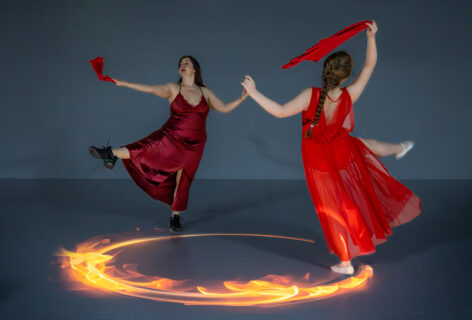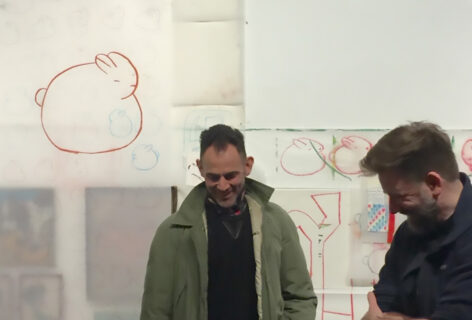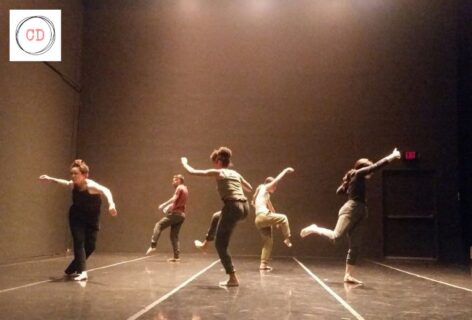Anh Vo: Do you think abstraction belongs to white people?
Juliana F. May: I think white people think that it does belong to them, but they actually wouldn’t admit that. I don’t think white people are in the practice of admitting that because of how the 60s postmodernism came about and how it’s been carried out over the last 50+ years. It operates as neutrality, as a given. That white people focus so much on the form of their art and that their bodies can mean anything and be anything. It’s something that people are just waking up to. That a given body is a neutral body, which is obviously problematic and situates the work that comes out of that thinking as deeply unconscious. It has thorns and holes and is vulnerable to critique now. It has always been, but I think right now it’s being deeply critiqued, as it should be.
AV: So you’re saying this is a thing that people do unconsciously and now people started waking up to it?
JM: Yeah, I don’t know what that looks like. I think in Miguel’s article, he’s talking a lot about people of color, Latinx, brown and black people having to make work about identity. Like, right, white people can make work about form and people of color can make work only about identity, which is also problematic.
AV: So there’s a binary of white people making form, and people of color dealing with identities, but do you think that in your work identities also jump out?
JM: I think that’s a byproduct of some new work that I’ve been doing in the wake of waking up to my own lineage and how that’s steeped in a deep sense of white neutrality and participating in these Eurocentric, western, postmodern traditions. For years, growing up, I never questioned the form, improvisation. We were just talking about negative and positive space. I think white people operate inside this thing of: whiteness is negative space. As if you can’t see it. That we can take up space and that content is like identity. Content is identity is positive space. So, when we operate inside of those assumptions, we take up so much more space. We claim abstraction as our own identity. And so, that allows us to say that I can create work about nothing. It’s kind of like escaping out the back door of abstraction, what you’re seeing is just shapes and lines and color and I can rest on the laurels of the white art history. Even though the work I learned about, like 1960s minimalist conceptual pop art, did have identity politics running through it, most of my white professors were really focused on minimalism and form and those austere definitions.
AV: So, in a way, abstraction historically is like this removal of content identities. They are there, but they try to purge it somehow.
JM: I don’t even know if it’s a removal, they just say it’s not there. Which is even more upsetting. There’s no active removal, it’s just: this is what you see, this is what you get.
AV: And we are trained to see: that is what it is. But you, I feel that in your most recent work, Folk Incest, you’re not giving up abstraction either.
JM: No. Because I think the other thing that is important to see is what abstraction is not, and actually Xavier Le Roy says this…
AV: (laughs)
JM: To talk about someone who is so entrenched inside that white European tradition of this masochistic high art, who participates in the power differential of making the viewer really submissive to those big conceptual art ideas. He would say the body can’t be abstracted, which I would agree with. But I think there’s such a huge part of the tradition of postmodernism that is rejecting modernism. Modernism in dance was all about the body as a symbol for this thing, like Martha Graham. And postmodernism and Judson was like no, it’s just an arm. And I think we’re in this current mess, this dilemma of trying to understand the crashing of all of those ideologies and it’s a reckoning right now.
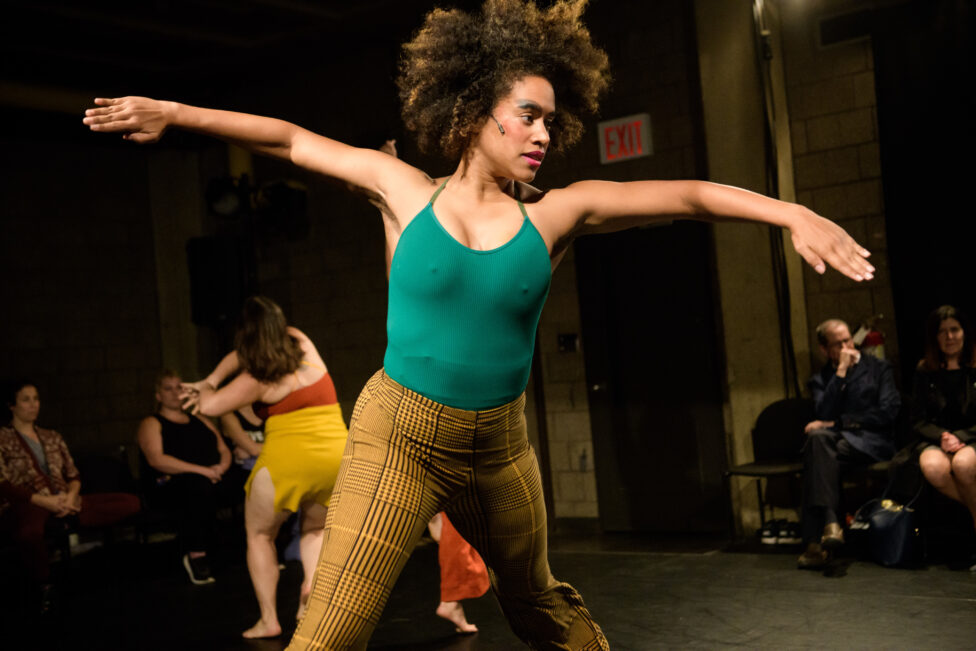
Leslie Cuyjet in Juliana F. May’s Folk Incest. Photo by Ian Douglas
AV: Do you feel like you also want the viewers to submit to your work when they enter into the space?
JM: I do.
AV: You do.
JM: I mean, I don’t know exactly what submit means. Can you say?
AV: Because you were saying how in high art they want to make the viewers submissive to the big ideas.
JM: Right.
AV: I was referring to submission because for my own entrance into your work, it’s an experience that’s already there and I just have to sit and see things unfold.
JM: Is it a seduction or an entrapment?
AV: Probably both.
JM: Yeah, I think I want a little bit of both. I’m more uncomfortable admitting to the entrapment, because I don’t want to feel like it’s dominating and that there is this power differential that I’m setting up. But because I’m interested in a structural dissonance, that’s what structural dissonance does. It puts you off guard, puts the audience off guard, it’s unpredictable, and you don’t know what’s coming next and then, you could risk someone into submission. It’s not that I want the audience to be at my whim, but I do want to have control over that dissonance and how that dissonance is operating. So it might not always be conscious, but at some point in the process, there is a real conscious effort to undermine the thing that came before or after so that the audience can get trampled inside of that undermining process. It can also be uplifting. You can subvert the thing you just did by completely changing the situation and the stakes in the room. Like going from something that’s uncomfortable and gross to something that’s uplifting and musical and poppy, and then, subverting that again, and then subverting that again. Yes, I think it’s between seduction and submission.
AV: You’re talking mostly about compositional tools, and abstraction is one of the tools that you definitely inherit. I am also thinking about abstraction in relations to the audience’s entry into the work, especially into your work because it deals so much with your own personal trauma. In Folk Incest, it’s a trauma that’s very particular. There’s sexual trauma, there’s the Holocaust. In a way I can’t quite relate to it, but I can’t distance myself from it, either. I feel that with abstraction, and with the way you obscure and subvert it, there’s almost a stepping back that allows me to be hailed by it.
JM: That’s what abstraction could be really good at. Abstraction is not very good at storytelling but it’s great at reflecting trauma because it doesn’t abide by any of the compositional tropes that narrative has to follow. Like climax, crescendo, beginning-middle-end, the protagonist, the downfall of somebody, the rise up of somebody else. If you’re interested in centering trauma, abstraction can define it in a way that allows it to really define itself, actually. Trauma exists in terms of memory out of sequence. And it’s an embodied experience most of the time, it doesn’t have to be retold. It’s not languagable in the way that the #MeToo movement has focused it.
AV: That was a very cringey moment in your interview with the New York Times. They asked you about the alliance between your work and the #MeToo movement. It’s as if the only way we as a culture can address trauma is in this mode of personal confession, making it clear, making it communicable. How do you feel about the fact that your work can only be understood in those terms by certain people?
JM: It feels difficult. In one way, the #MeToo movement participates in the patriarchy because of how it’s being defined through language. It feels almost religious. At the same time, it has given more access to the work. I feel so uncomfortable saying that, but it has let people in, whereas my work in the past, has been really inaccessible.
AV: Yes, I agree.
JM: And maybe that is how I dealt with structure. And characterization, the body, the grotesque, whatever you call it. This has given people a new way in, and I’m uncomfortable with that, but also I am happy about it. I don’t think anyone would consider my work mainstream, but there is more access now. I don’t know what the next piece will hold, but the timeliness of it made me feel like oh god, people are going to think I made this work because of the Kavanaugh hearing or the #MeToo movement. It was a coincidence.
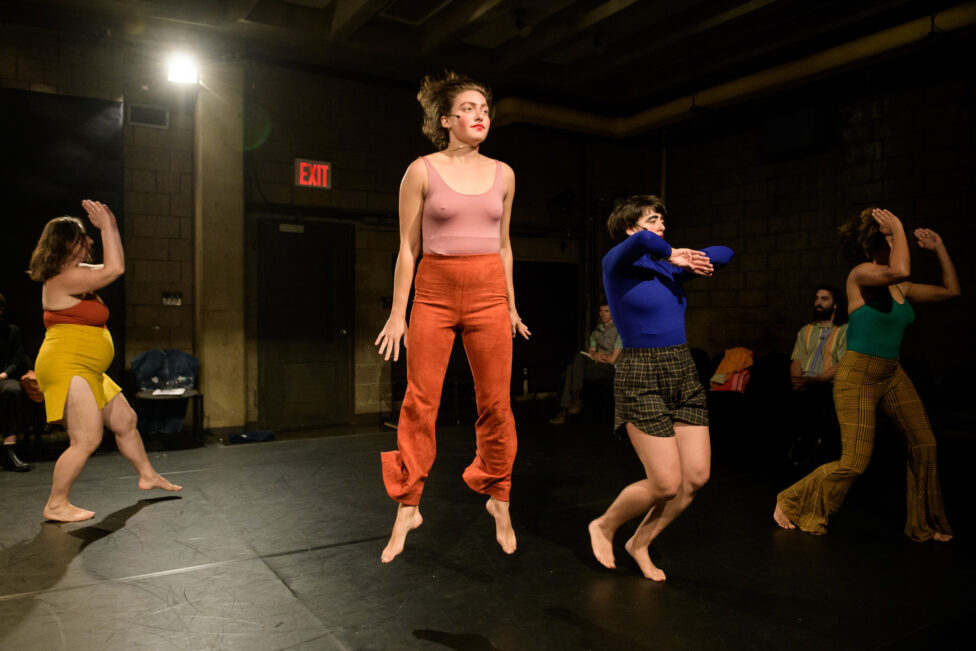
Rebecca Wander, Lucy Kaminsky, Tess Dworman and Leslie Cuyjet in Juliana F. May’s Folk Incest. Photo by Ian Douglas
AV: That’s part of abstraction too. Because it doesn’t say anything so concrete, you can’t capture it, and it can go almost anywhere the way people want it.
JM: So, people were exploiting the abstraction?
AV: Yeah, that’s why whiteness and abstraction go together because they both have this tendency toward the universal.
JM: Right.
AV: It’s so easy to universalize. To go beyond the particular and then drive it to anywhere you want.
JM: I’m thinking about things people use to write in grant applications about the universal human experience and how you don’t say that anymore. It was at some point in time, in the 90s maybe. But the universal experience is not relevant anymore.
AV: I brought up the universal because I do find in your work there is tension between the universal and the particular in the way you deal with trauma. Because of your investment in form and in the structure of trauma itself, I, myself can enter it and take something that doesn’t quite belong to me, because of the way it’s abstracted.
JM: How is it abstracted?
AV: You particularly talk about the Holocaust and sexual trauma. But there’s a stepping away to see the structure of how trauma emerges and circulates and is repeated and perpetuated that, may I dare say, may be universal.
JM: Right. Maybe this is about whiteness… I can speak more to being a Jew. I don’t know if my father would have called himself an anti-Zionist, he was certainly pro-Palestinian. My grandparents were refugees from the Holocaust, but I grew up with a anti-Zionist sentiment. Through the research for this piece, I was investigating what my identity as a Jew was and also my experience with sexual trauma, and how unprocessed grief is essentially just a barrier. How as Jews, we went from the trauma of the Holocaust to perpetuating rape. Our own repeat of that trauma in Israel and in Palestine. That’s it, repetition. Throughout the last ten years I’ve been figuring out how some people use repetition as a kind of mastery, like understanding the thing they’re trying to cultivate, but that also feels like gaslighting. You know, of like, okay, why? Why do we need to keep doing this thing? Is it because of beauty? Is it pathological? Is it because it’s about healing?
AV: By this thing, you mean like dance and art?
JM: Yeah, or a unit of movement. Is it about hurting the body? Is it about exertion, exhaustion? There are all of these things that we try as makers of movement, content and ideas. Sometimes we don’t actually ask ourselves why. I sometimes tell my students the why, it can be a trap, because it keeps us out of an intuitive place. But I think that’s also a very white thing to say. Not to question the why all the time. Growing up, learning about composition, the why’s were not important. Just do. Follow your intuition. Follow the form. But you know, why? Because that’s the truest sense of your gut? Your form and your intuition are this fake lantern guiding us through the process. It’s not to say that it can’t be true, but it’s not the only truth. The way that I learned about abstraction is that it has no why.
AV: It has no why.
JM: It doesn’t have to answer to anyone. And what I’ve attempted to do in the last couple works, and maybe more successfully in this work is that it does have to answer to more people, to more things or events in life. My life may not be relevant to everyone. It’s very much about my own identity and about the people that I work with. Still, there is more accountability inside of that abstraction. That it still exists, that I’m still using it, but the why is more accountable.
AV: Do you feel like you have a pressure to answer the why, now?
JM: I feel less pressure now. I feel more freedom now after this piece, because I was a bit more nail on head with the content, although some people may think they have no idea what that was about. With my next piece, I feel so much more freedom because, also, letting go of some of the dancing is so liberating.
AV: It’s true.
JM: I’m gonna go and make a musical. That’s a whole other conversation about those early influences, which are so much about abiding by storytelling and ballad and emotional. Like emo structures that have a protagonist. I’m not interested in perpetuating those hierarchies inside the musical form, but using my skills as a choreographer to choreograph text and voice, I feel full permission to move forward into that now.

